Introduction
The latest addition to our vintage collection is a Keithley 130A handheld DMM from the mid-eighties.Keithley is not well known for its handheld DMMs, or at least I’ve never heard of them. It’s a 3.5 digit 0.25% instrument made in mid 1980s
Taking apart and cleaning
The meter came in a carry case with probe. Unfortunately both were in a very rough shape, raining tons of foam particles once opened. So they had to go.
And of course the battery was left inside, for who knows how many decades:
The insides are not looking too bad- mainly coated with case foam particles and with some corrosion wicking up the battery wires. Surprisingly, there is not much there: A Maxim ICL7106 of 1985 vintage in a socket, Ti TL061CP JFET opamp, and a Motorola MC14070 Quad X-OR gate. The rest is mostly 0.1% resistors, two very nice rotary switches and some diodes, transistors and caps. They did use a few precision resistor networks though, which are a bit less obtainable.
This required some serious scrubbing with alcohol, followed by touch up with a soldering iron and flux to get through the corrosion. While at it, I’ve changed the battery connector and wires to a new set.
Moving on to the display, it’s a typical LCD with a zebra strip connector
All contacts got a thorough cleaning with alcohol.
With all electronics out, it was a good time to give the case itself a nice bath in warm water and soap:
The results exceeded my hopes- things look brand new despite being almost 30 years old:
The mechanical design is pretty simple, but well thought out, so putting the unit back together was a very simple task:
Calibration and conclusion:
As described in the user manual, calibration entails applying 190mV to the inputs with the meter set to DCV range and adjusting the lone potentiometer until the screen readout matches that number. In this unit I was not able to get close to that. Looking over the schematic, it appears that the culprit is most likely the heavily corroded resistor network near power connection- it contains resistors used to setup reference voltage. I can certainly chase that down and fix it, but it’s not worth it. At this stage I have in my hands a nice museum piece for showing and admiring but no longer for any meaningful measurements, so if the readings are off by a bit- big deal.
Resources:
- EEVblog forum thread
- Adafruit blog
- Keithley Model 130A specs
- Keithley Model 130A user manual
- Keithley Ad in April 1980 edition of Radio Electronics

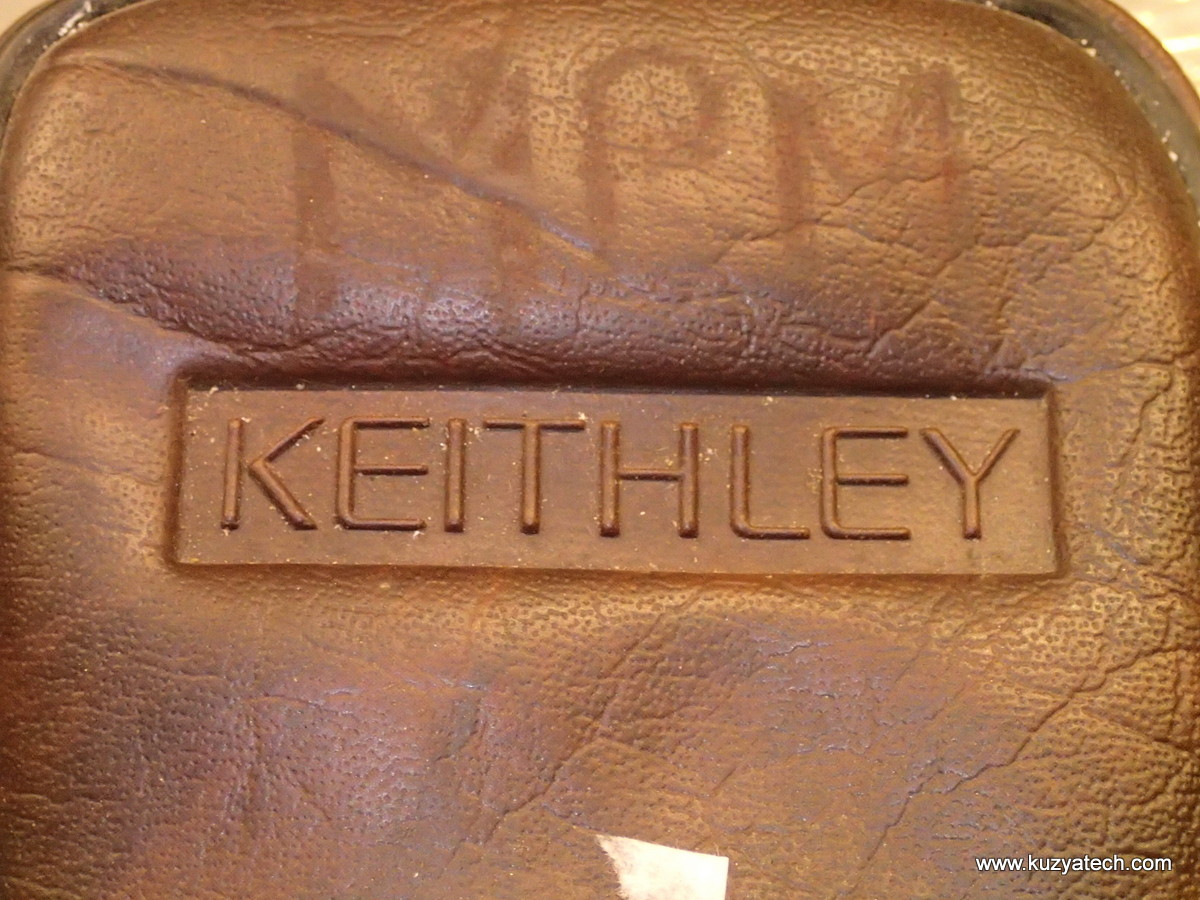
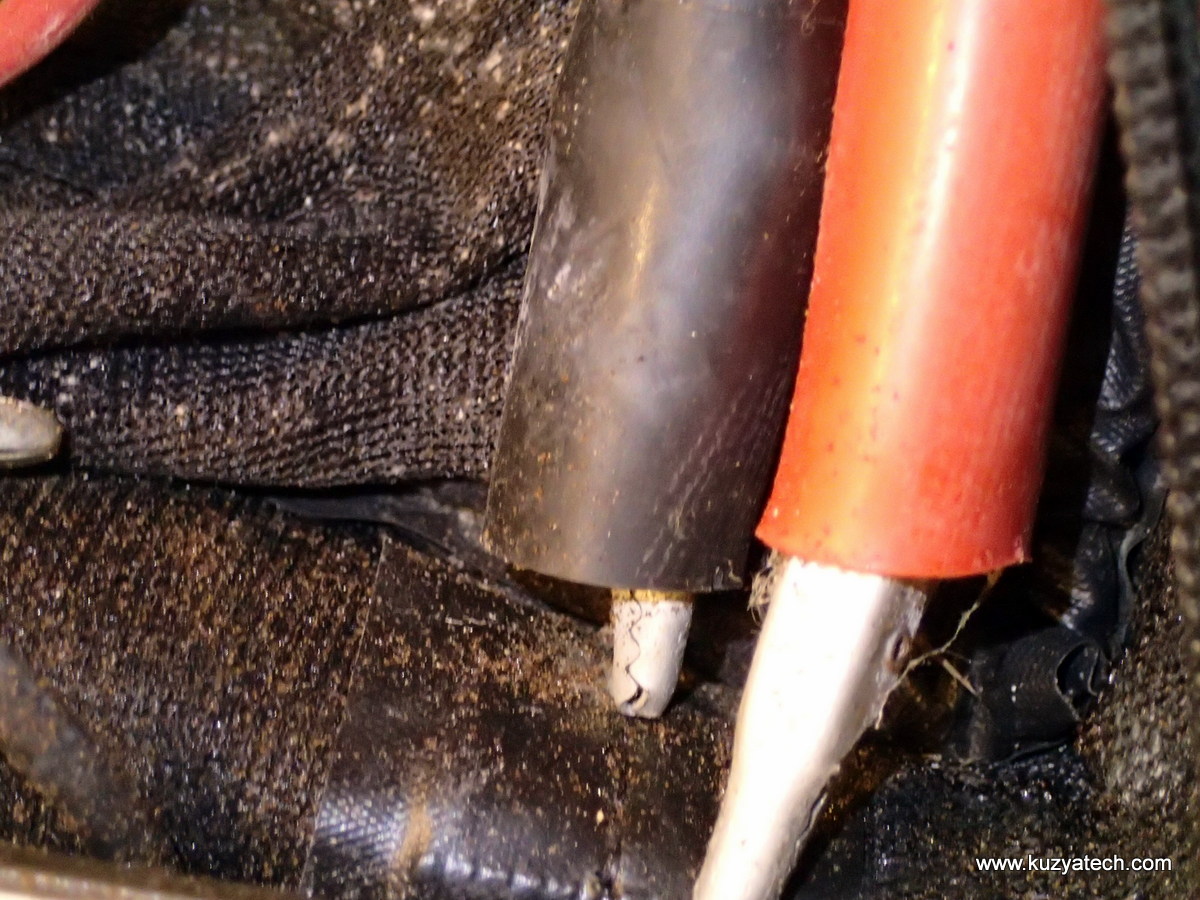
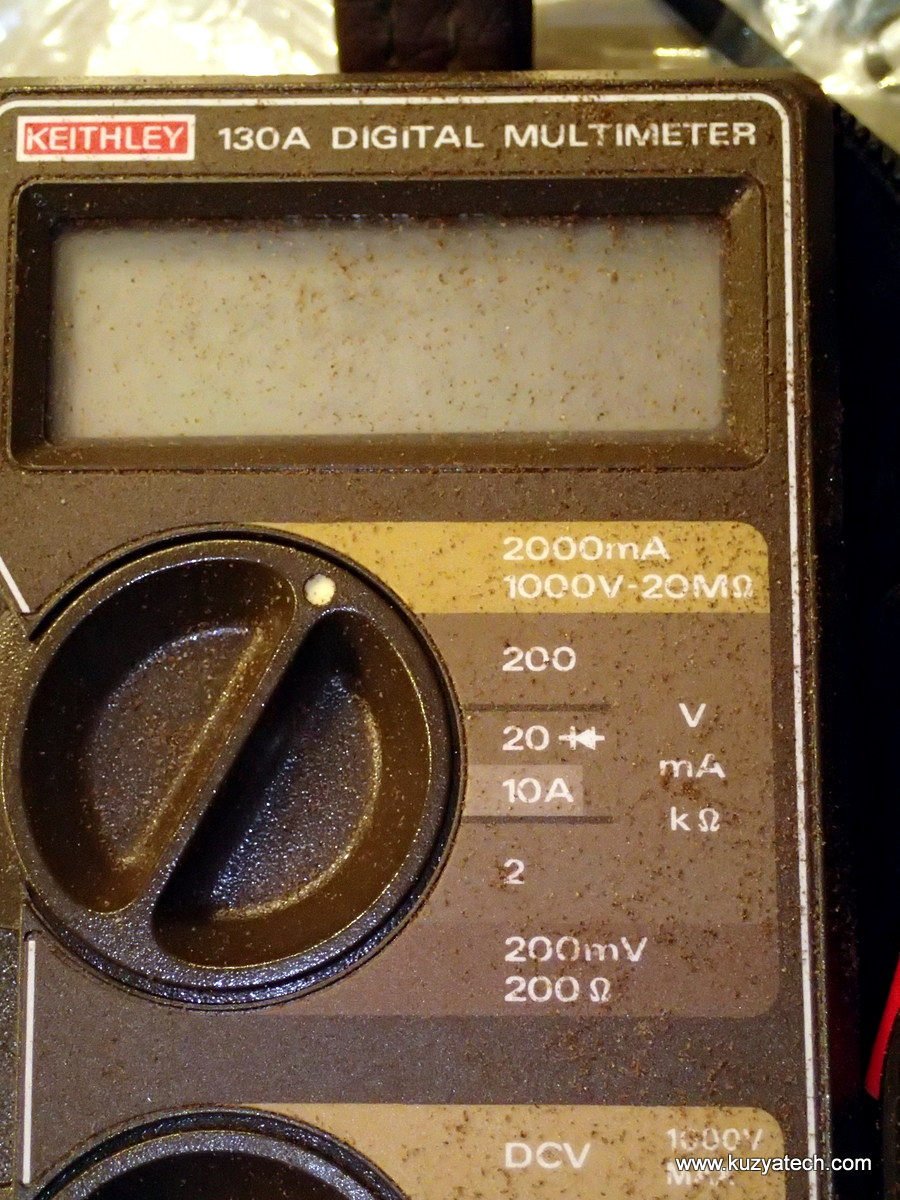
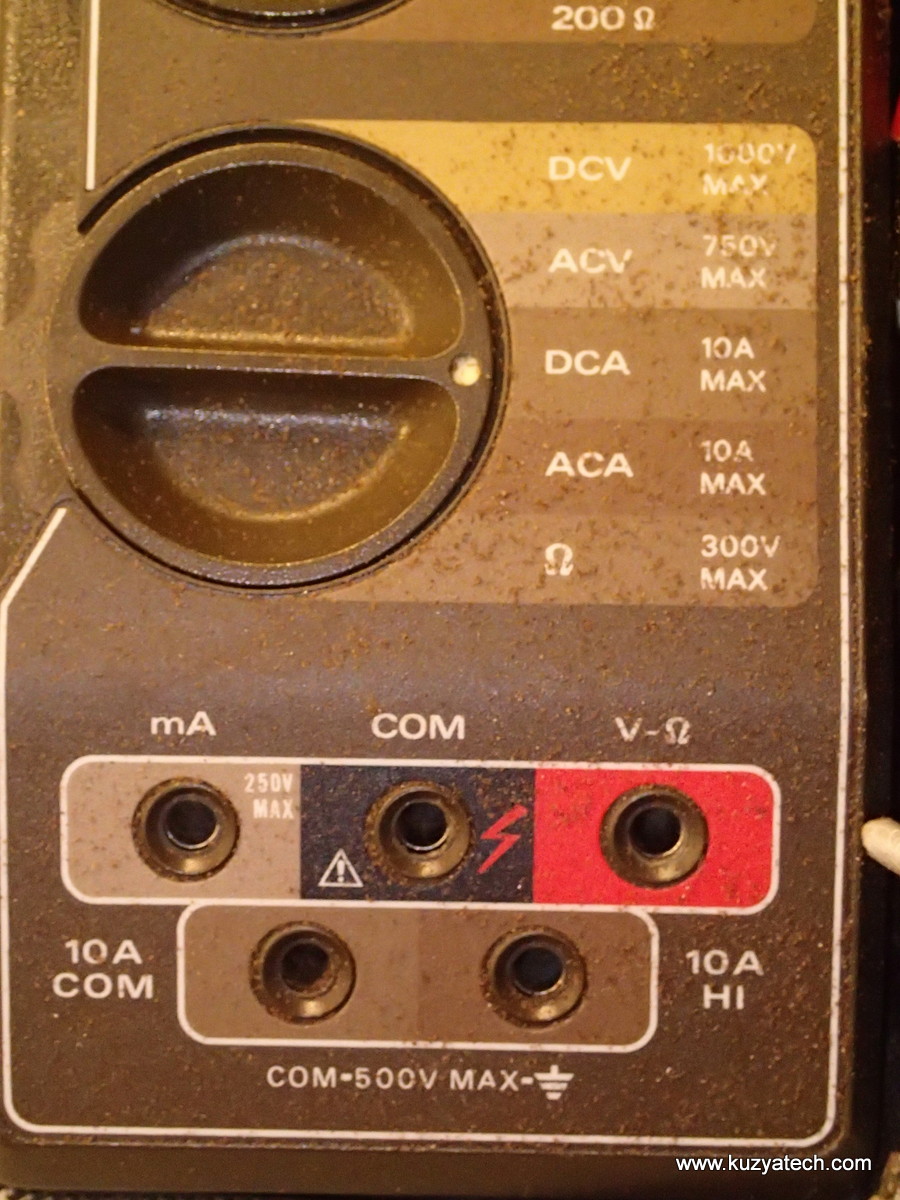
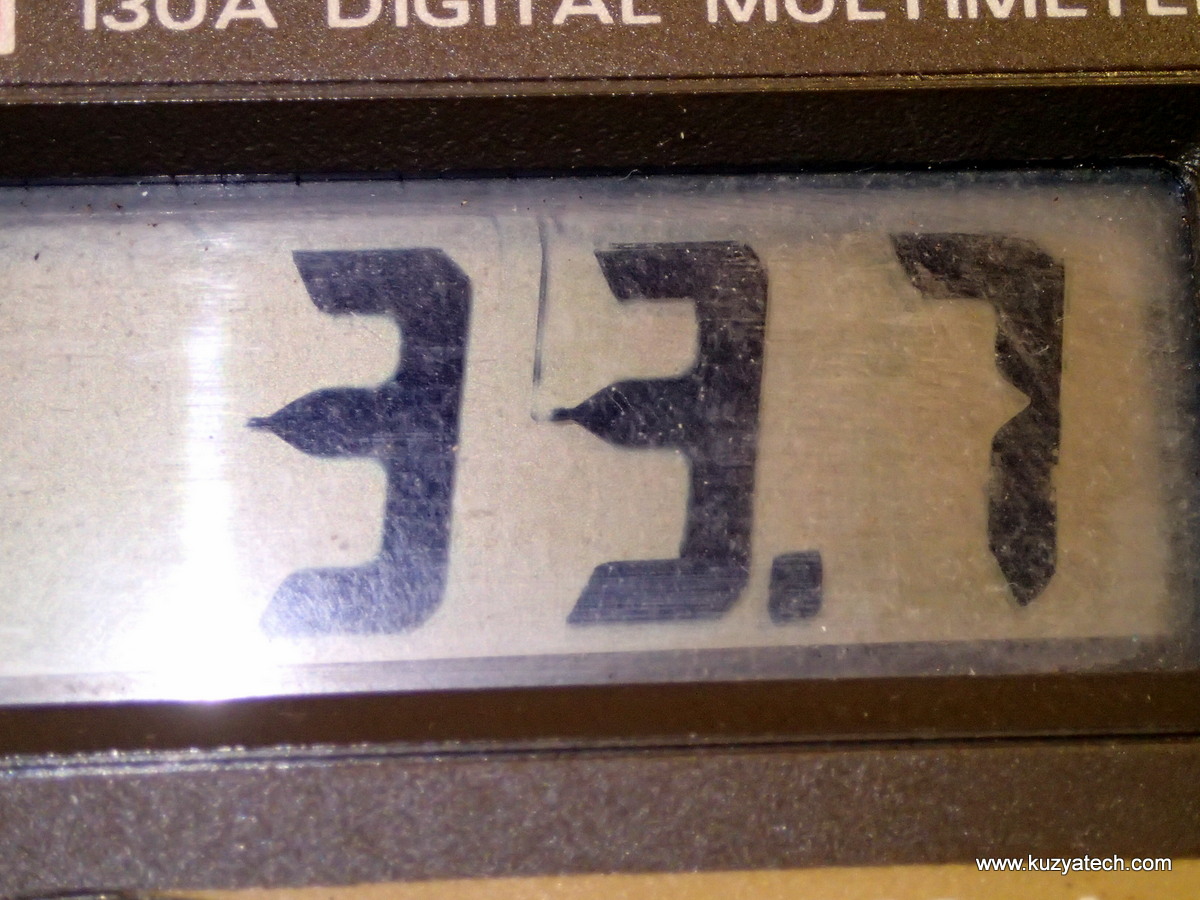
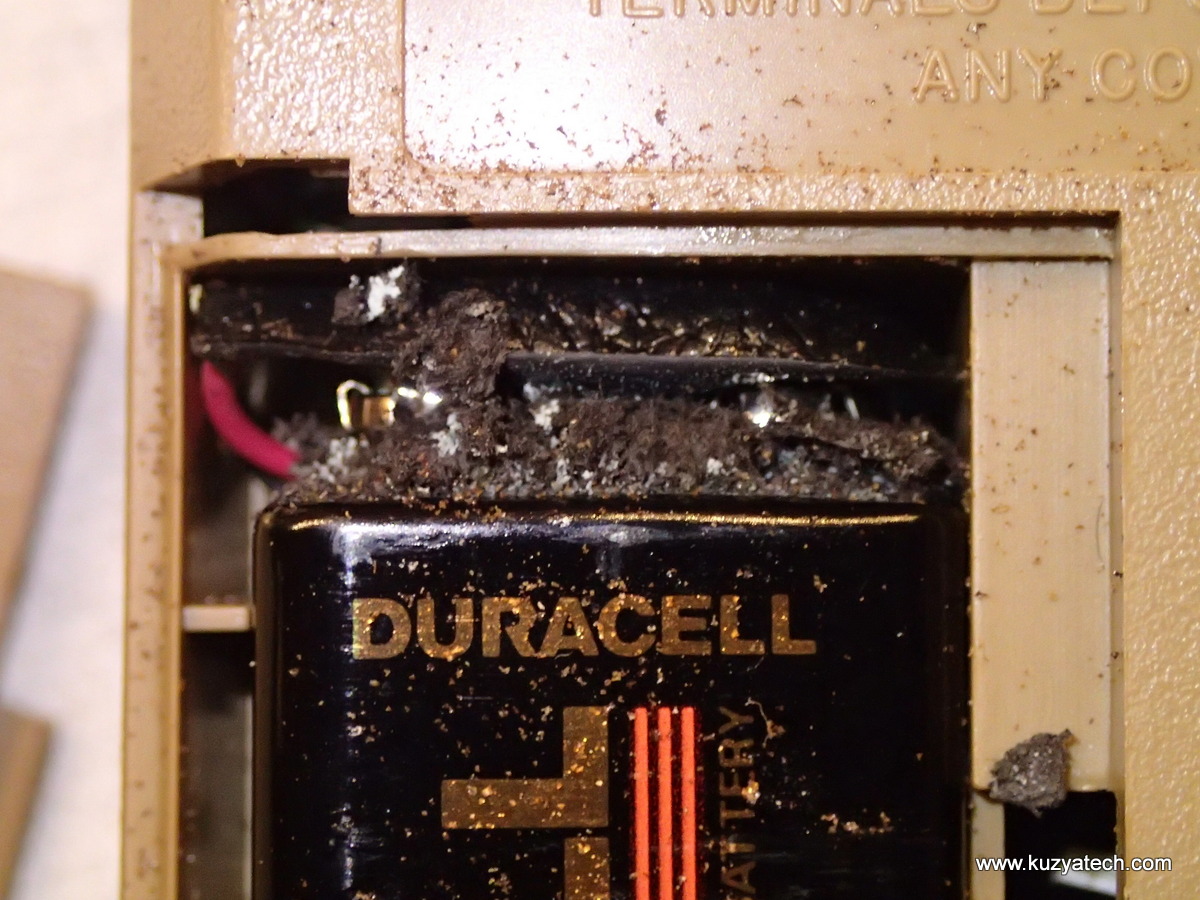
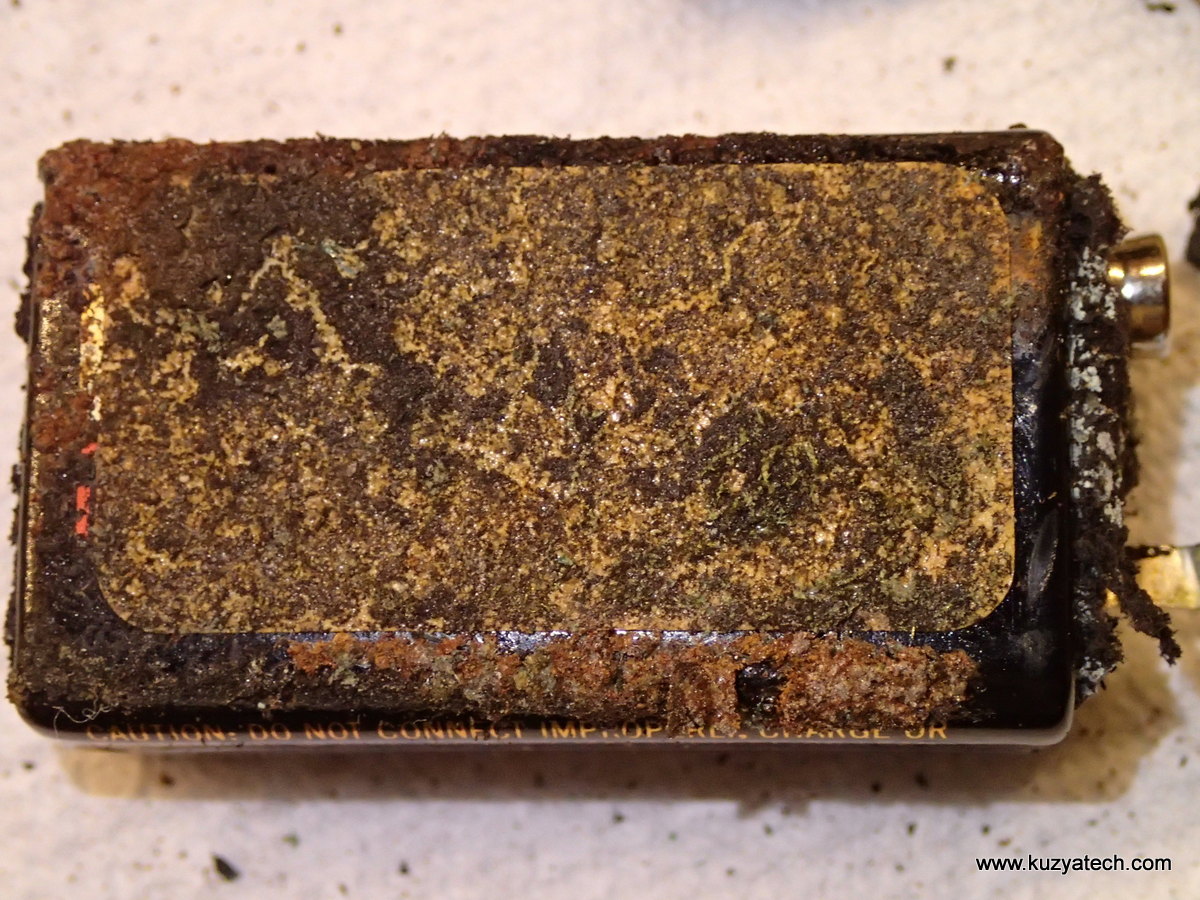
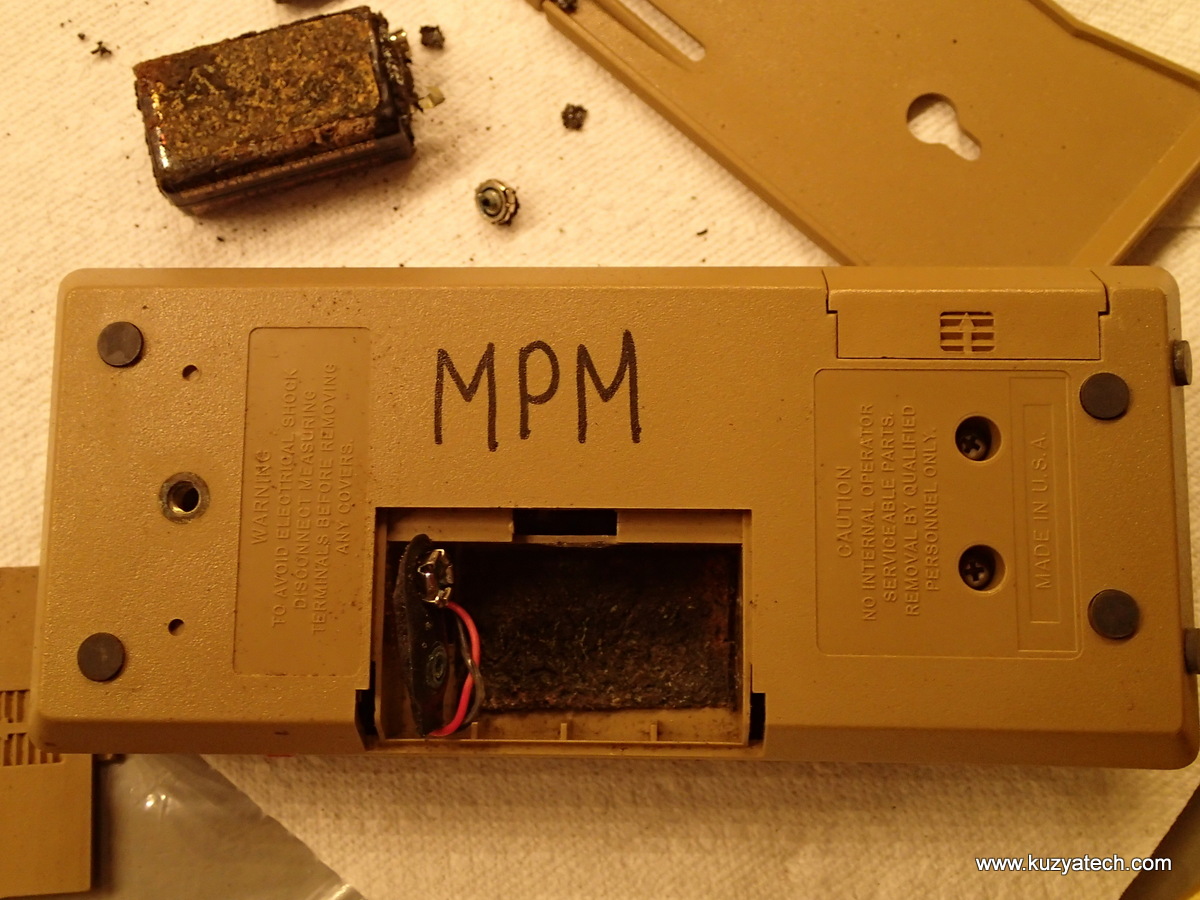
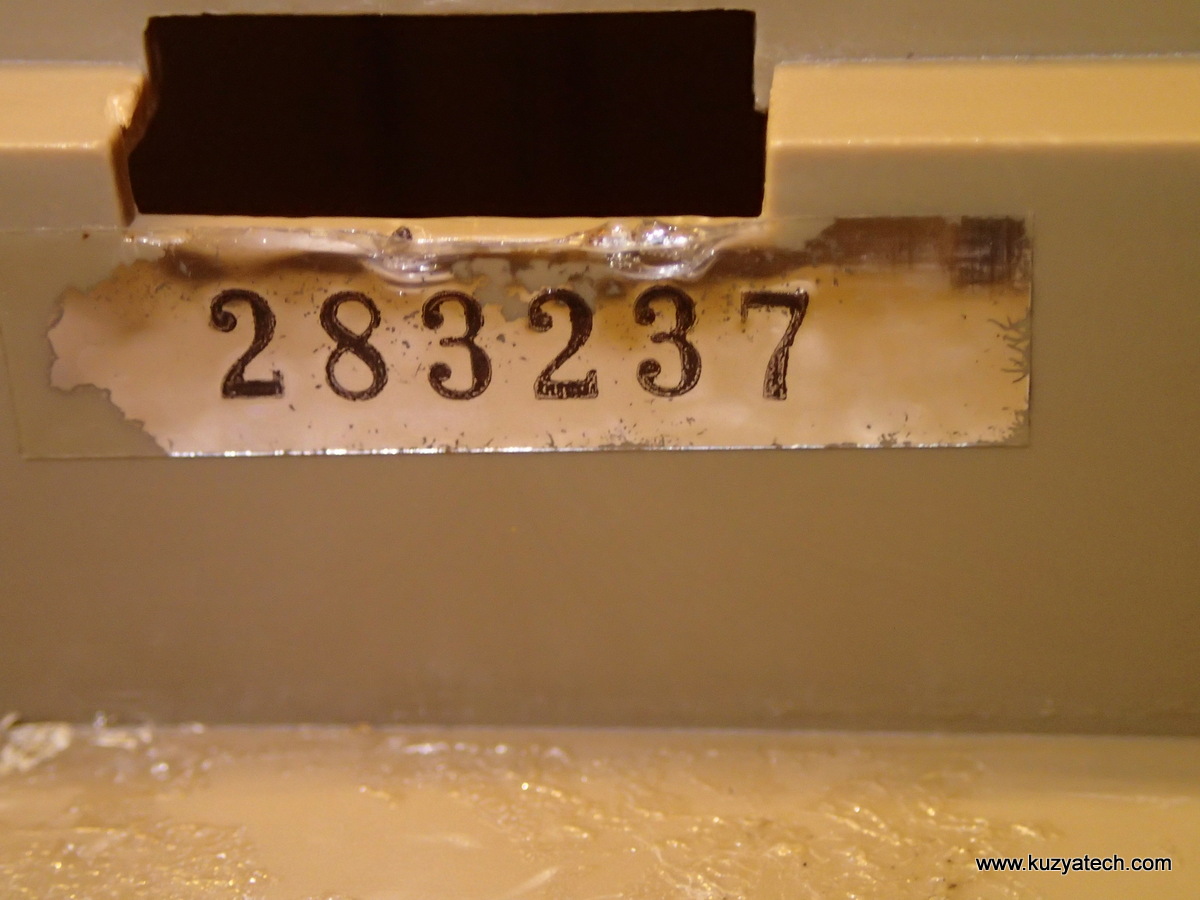

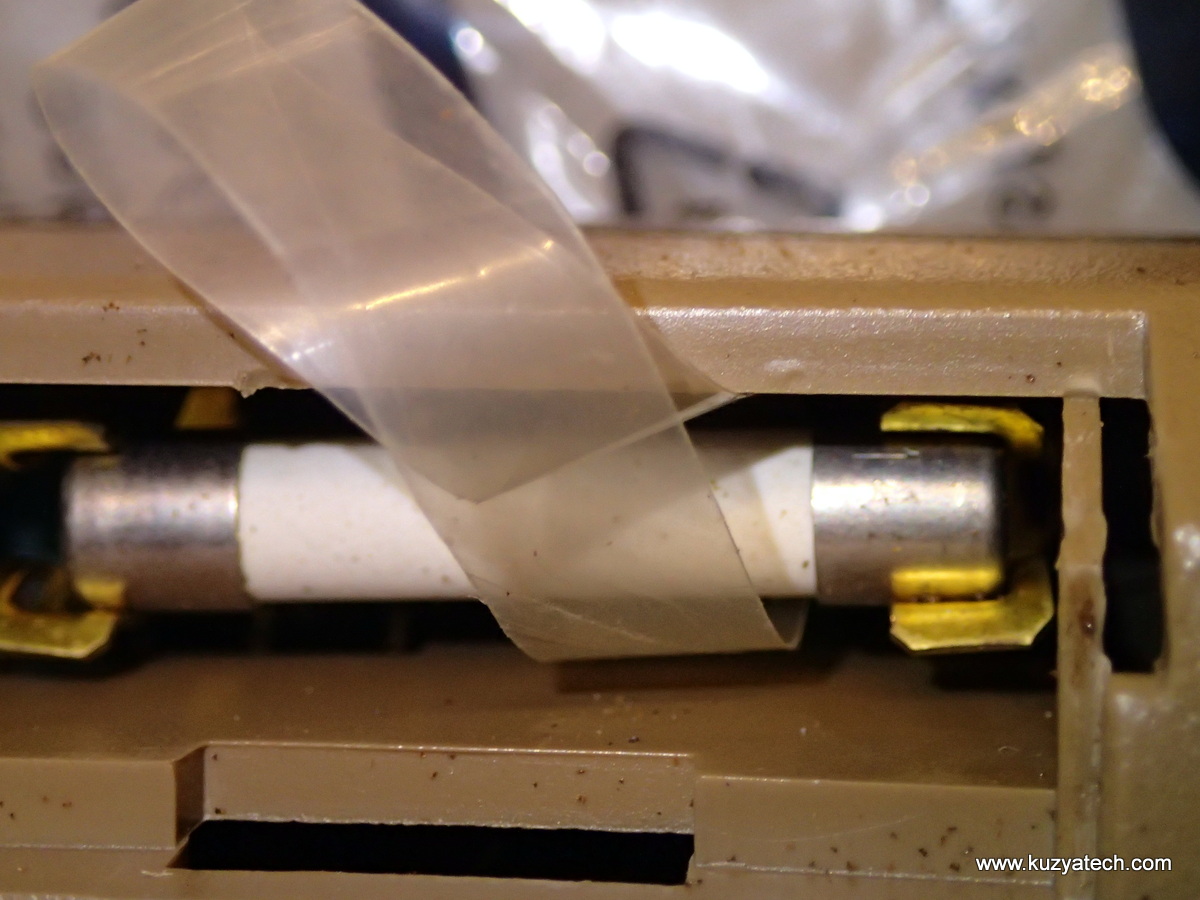
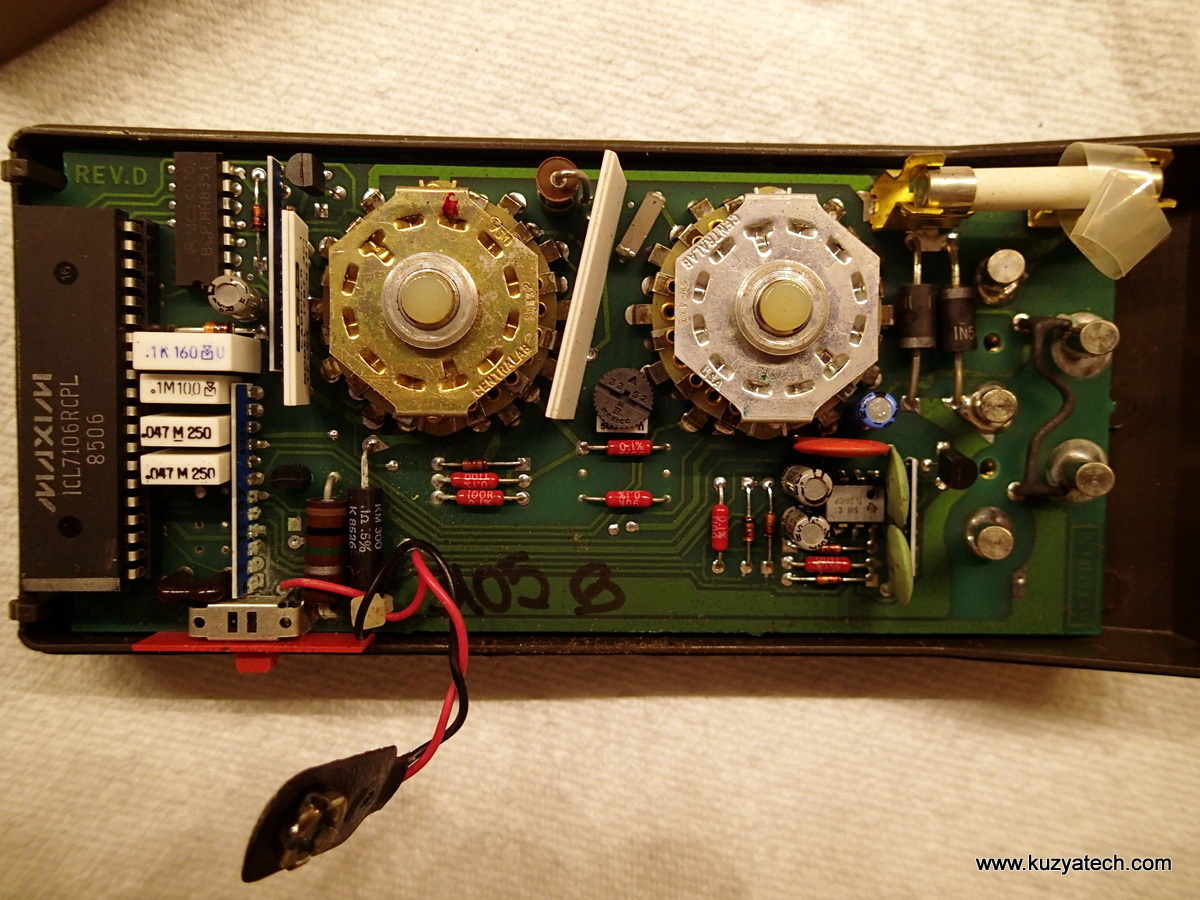
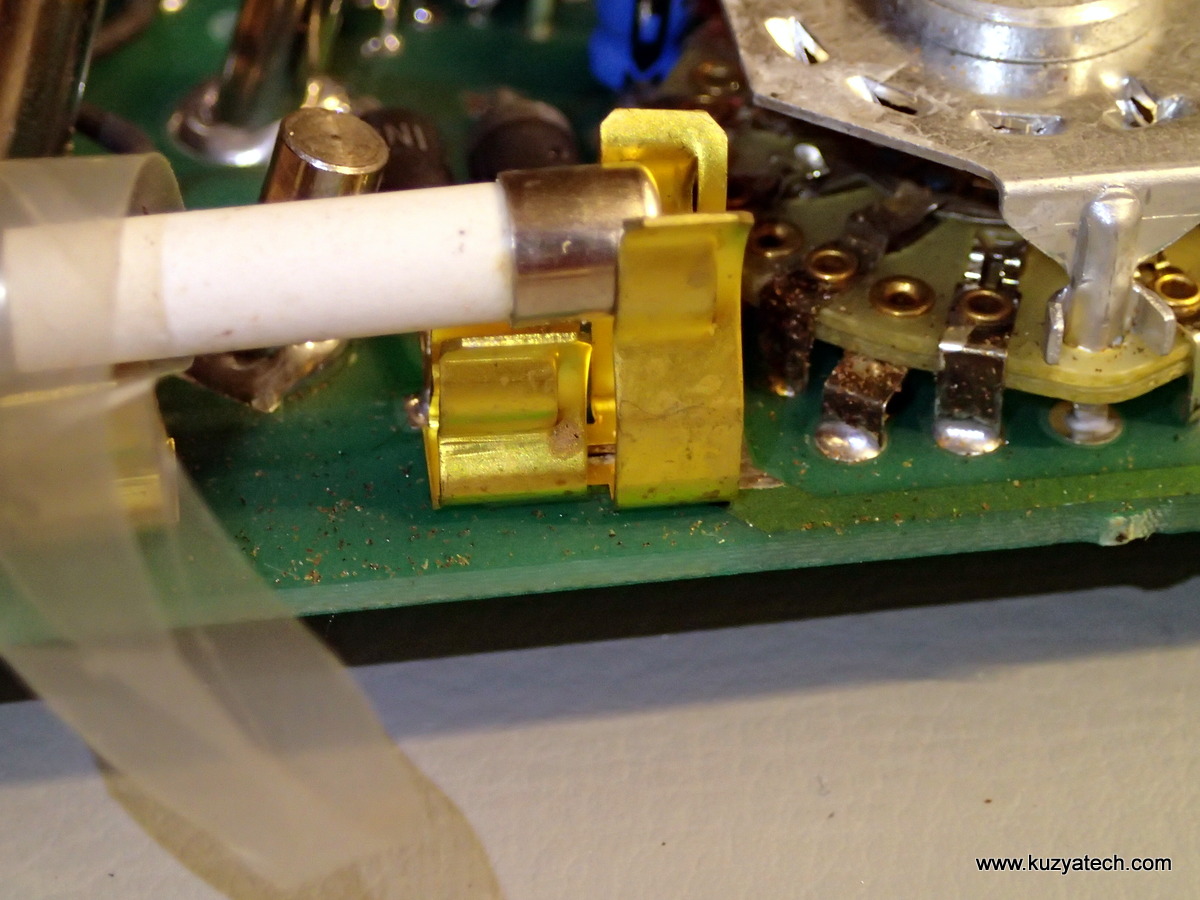

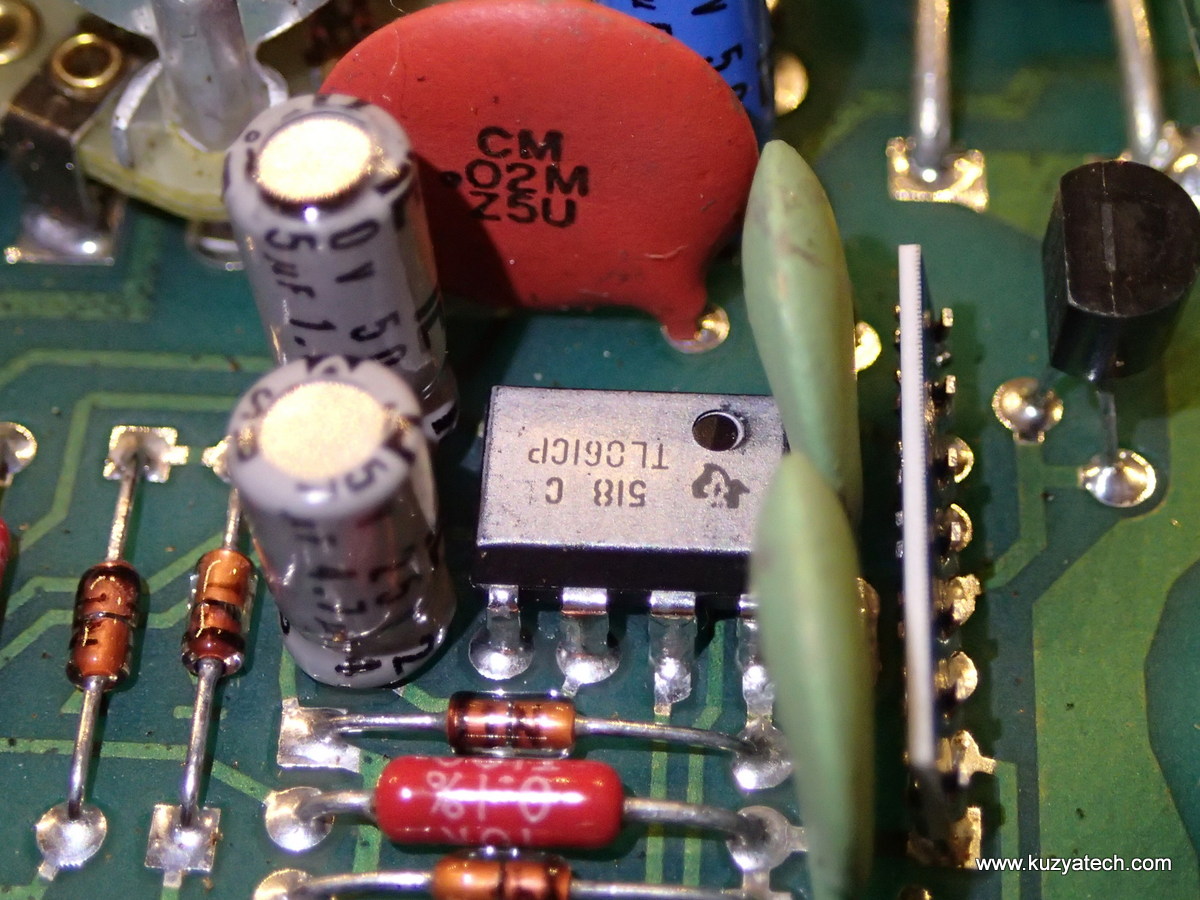
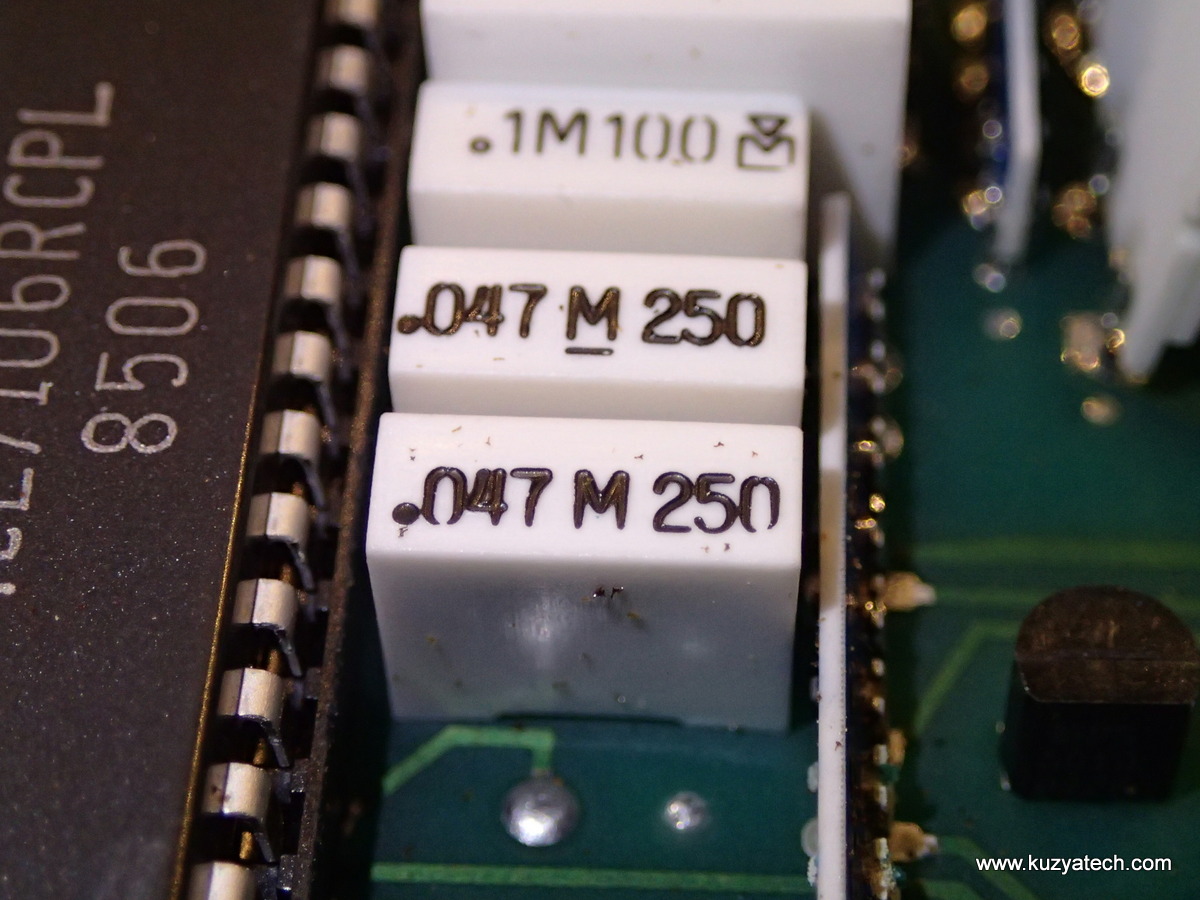

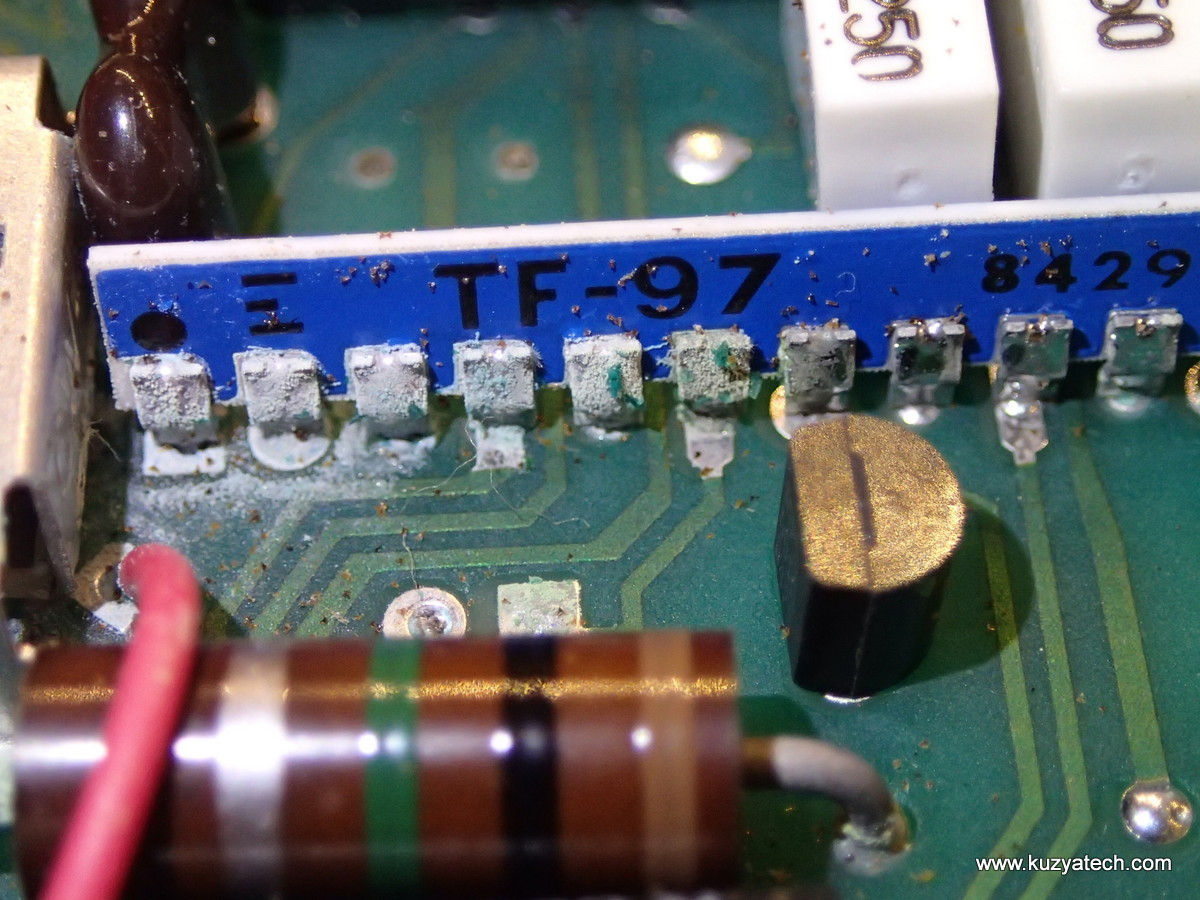

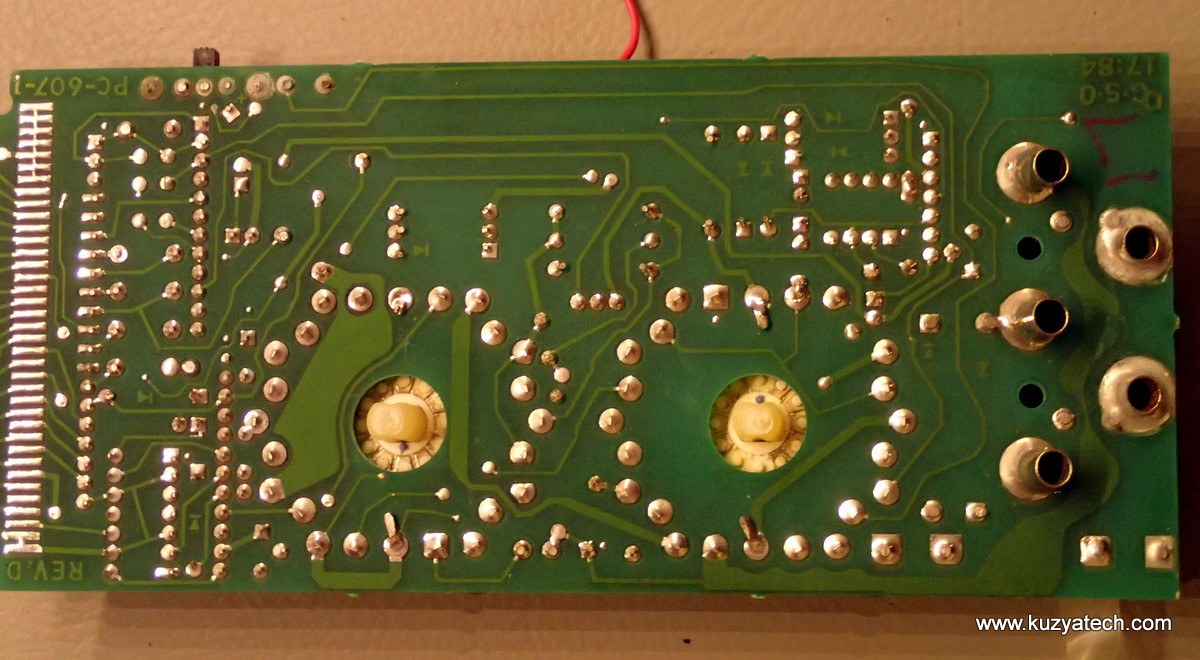

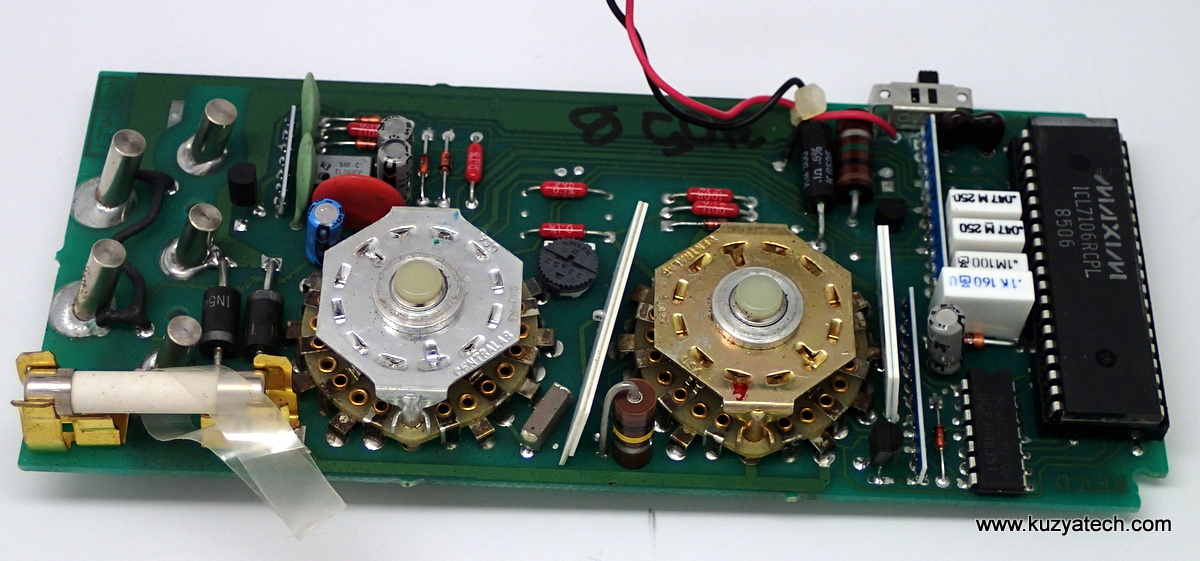
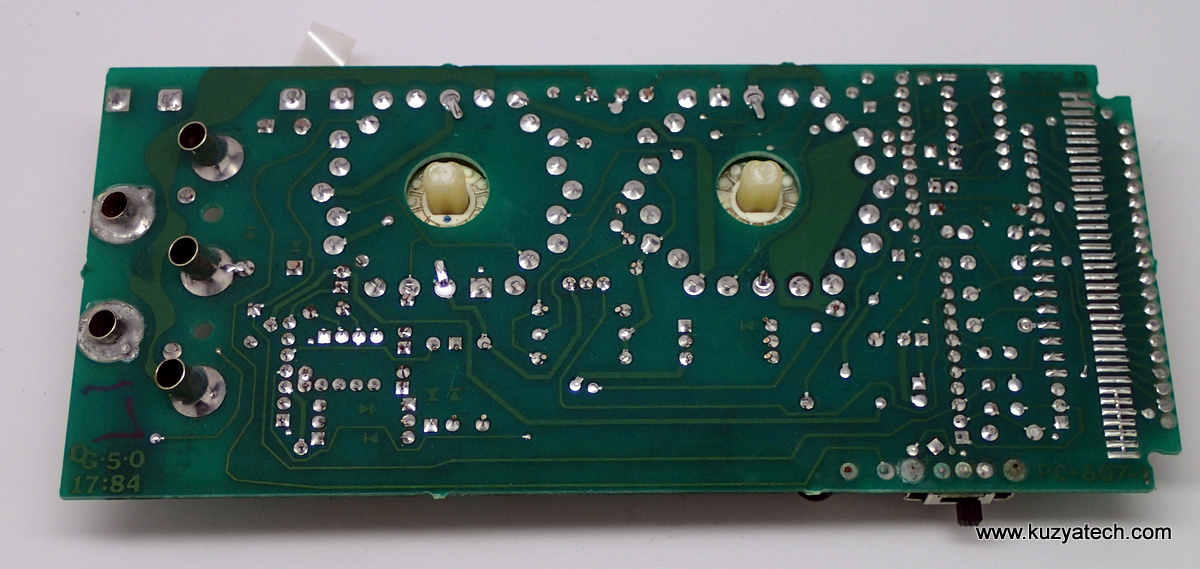
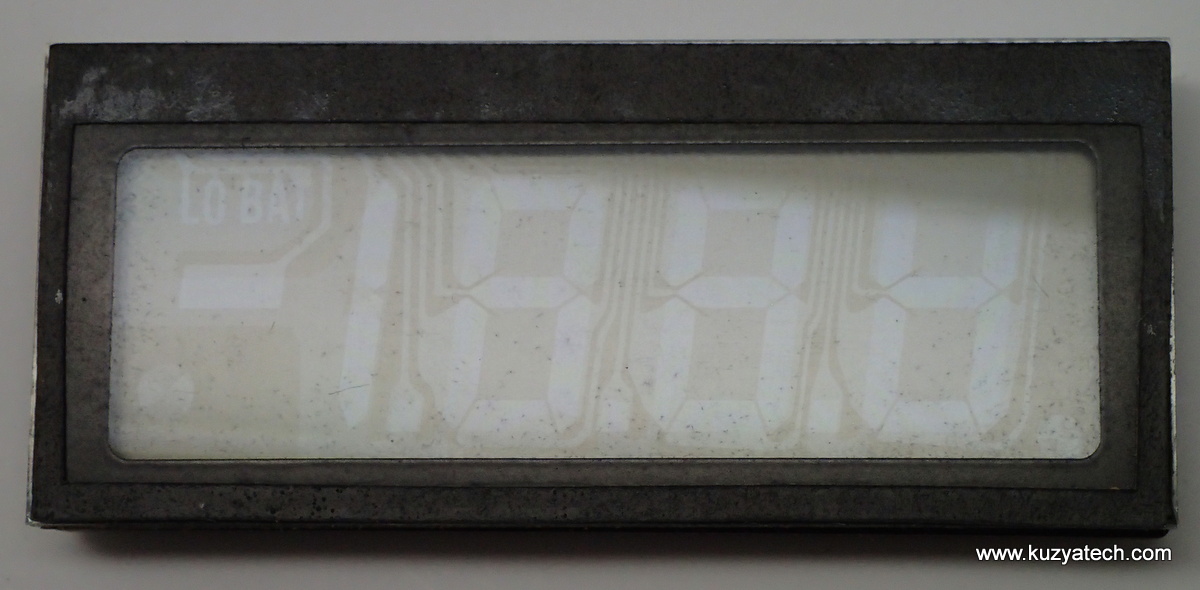
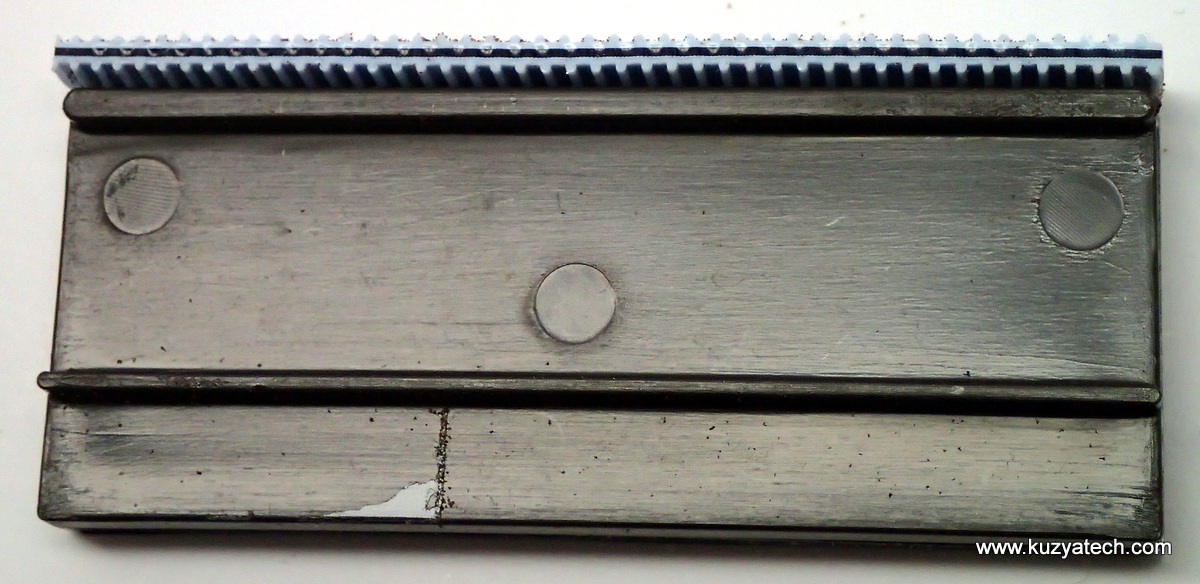

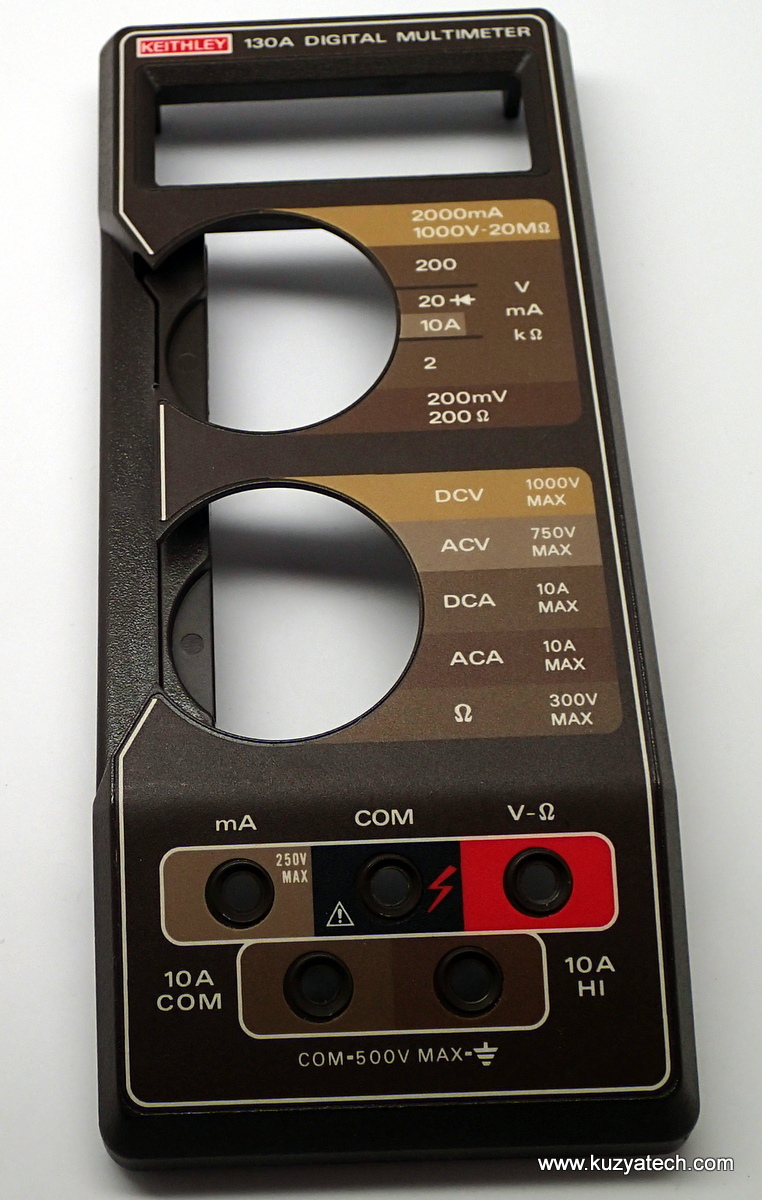
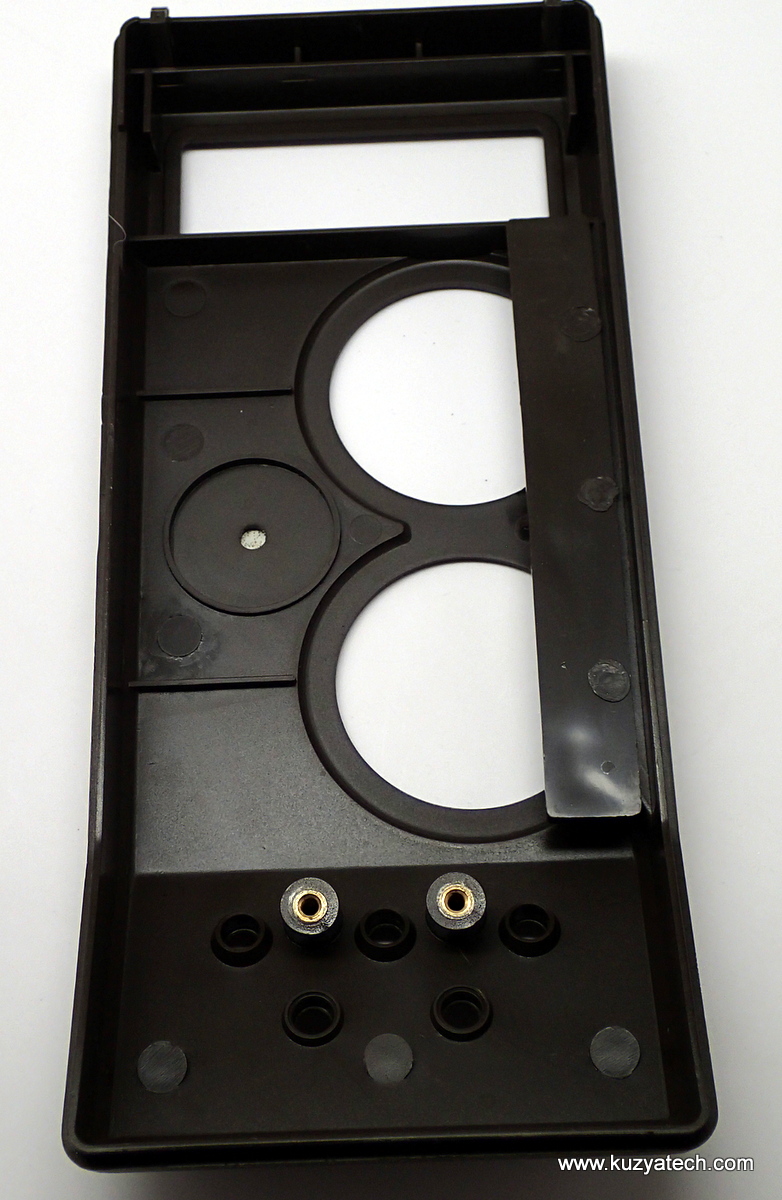
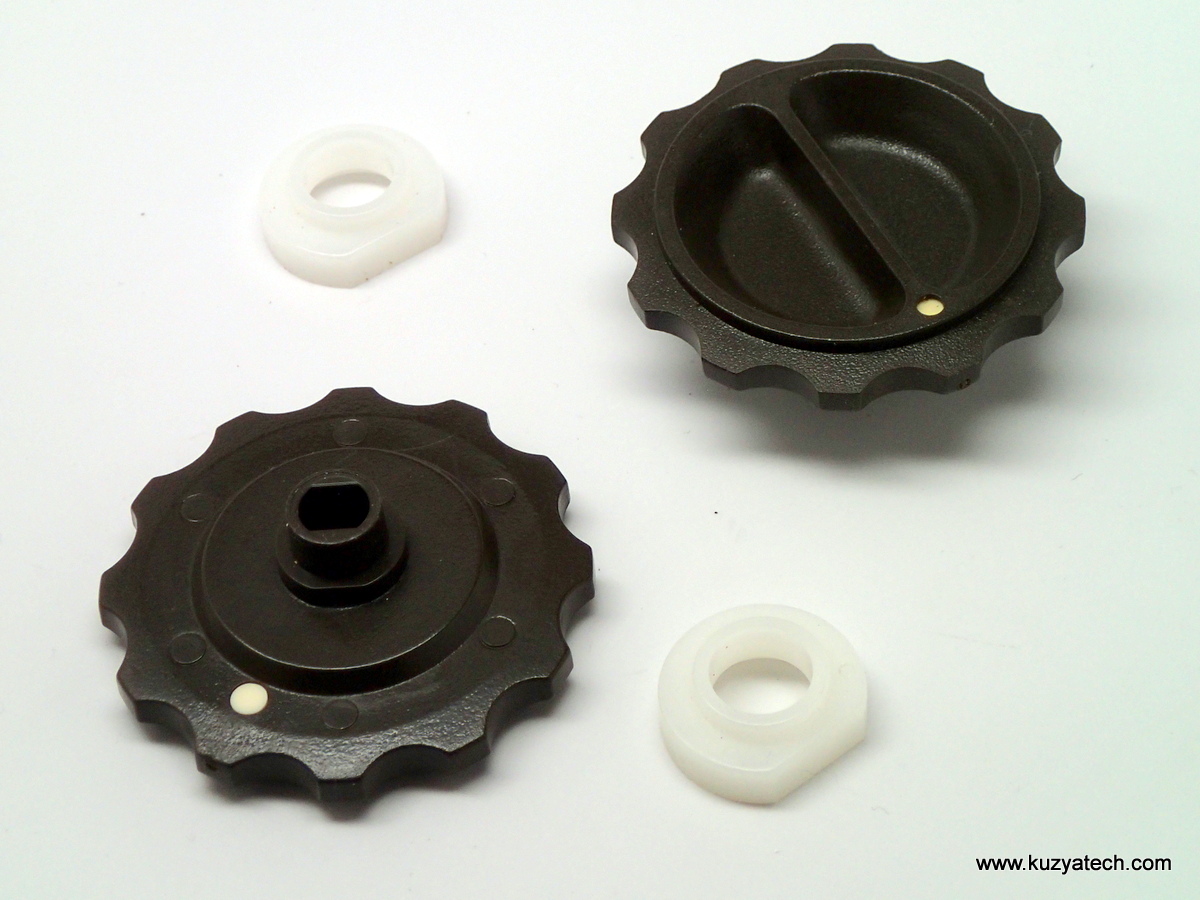
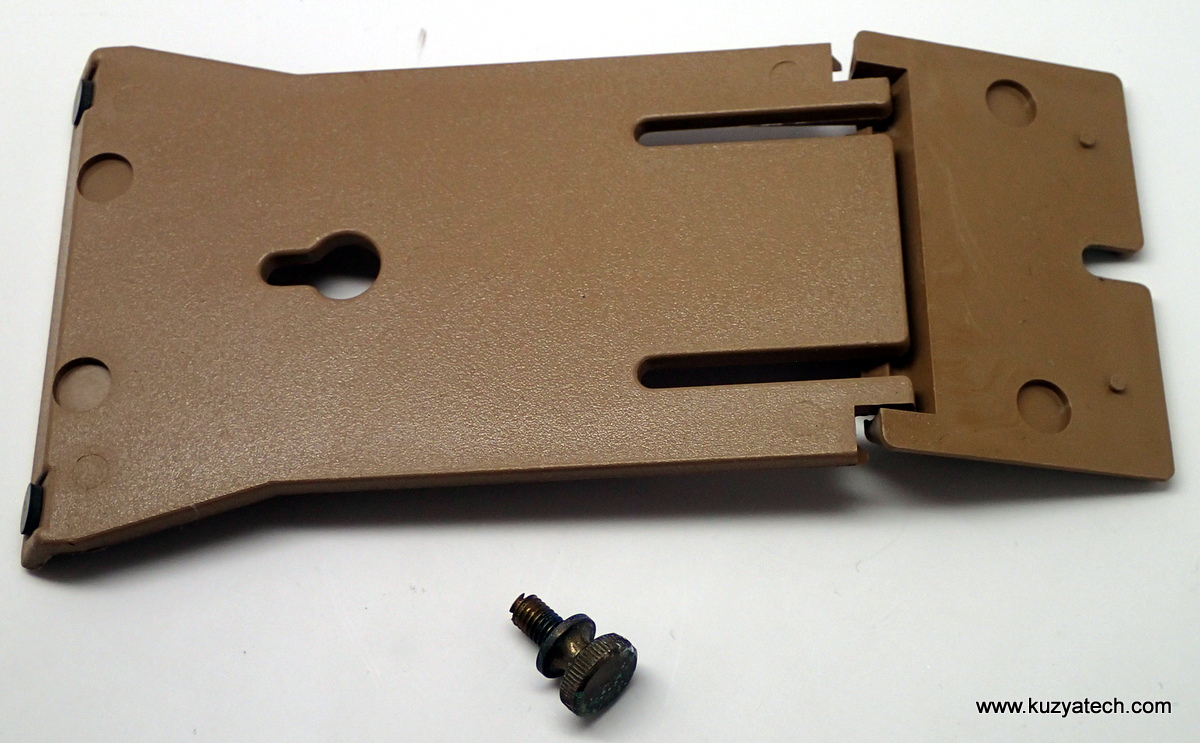
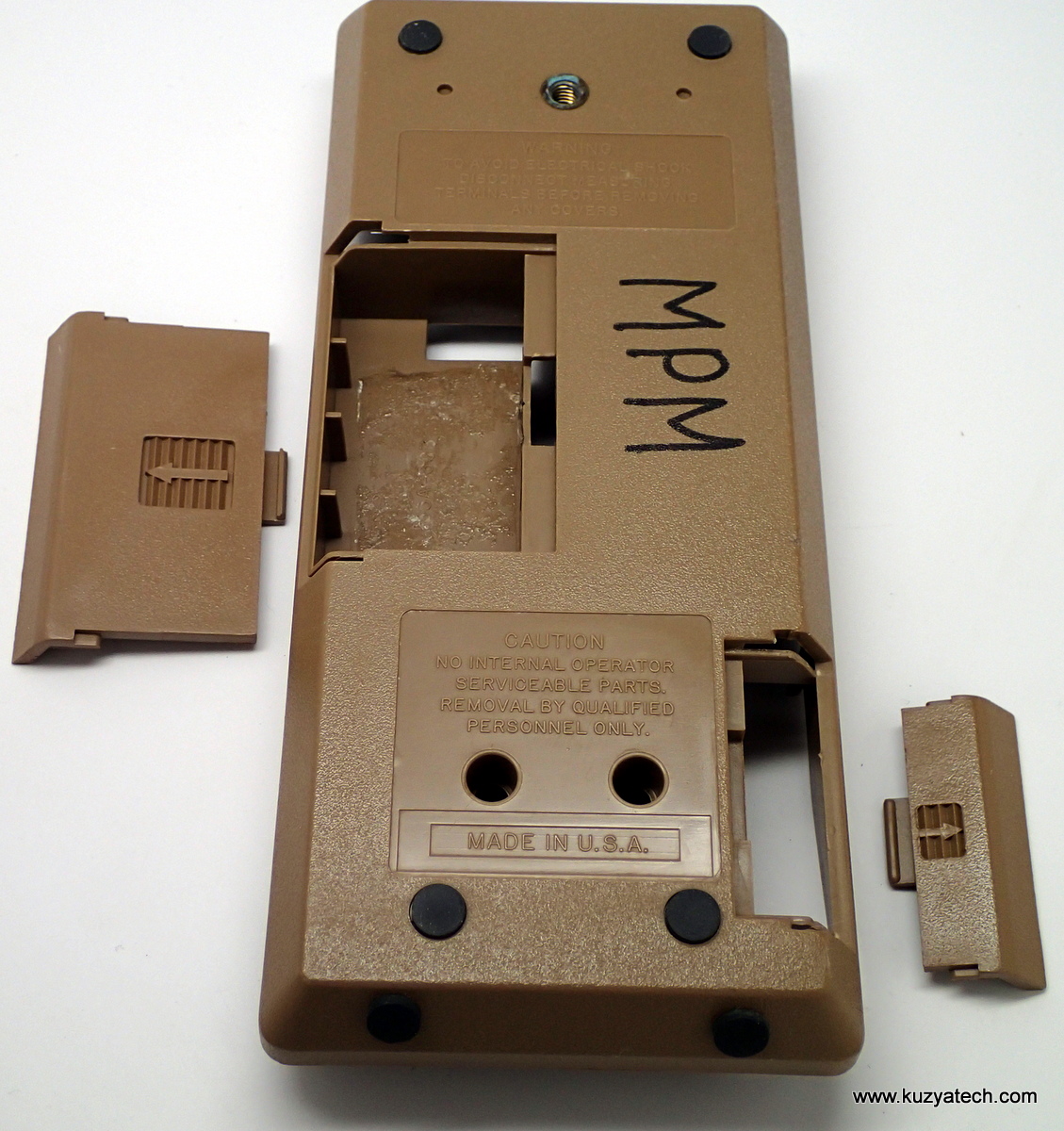
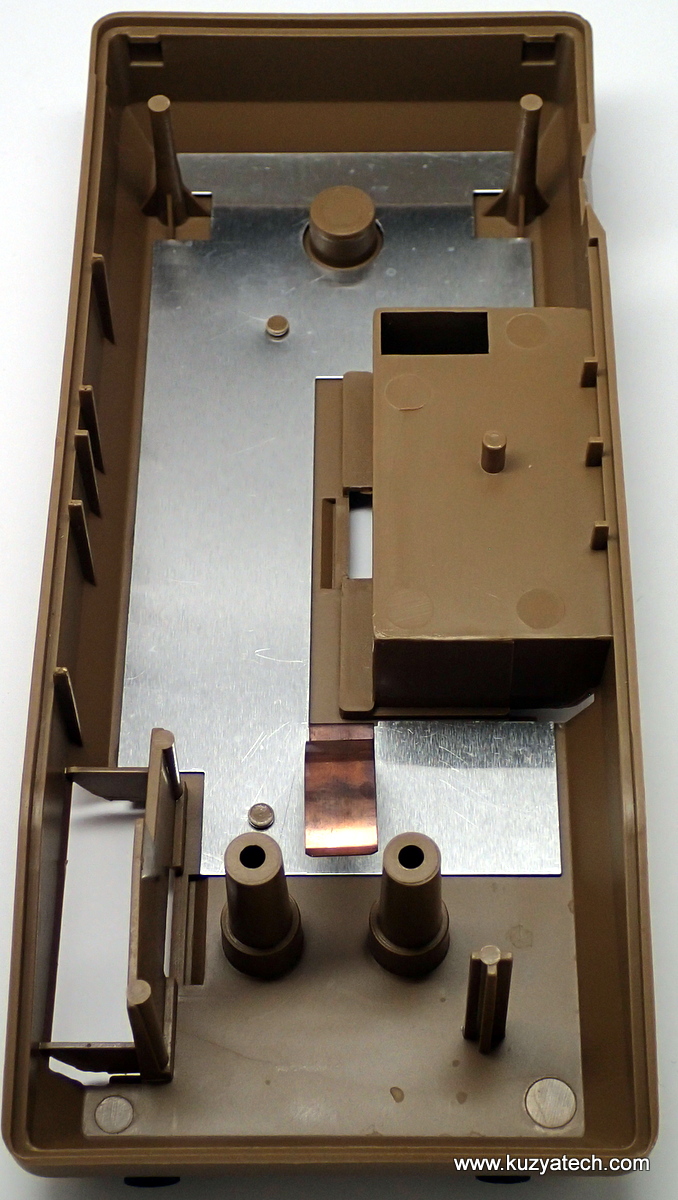
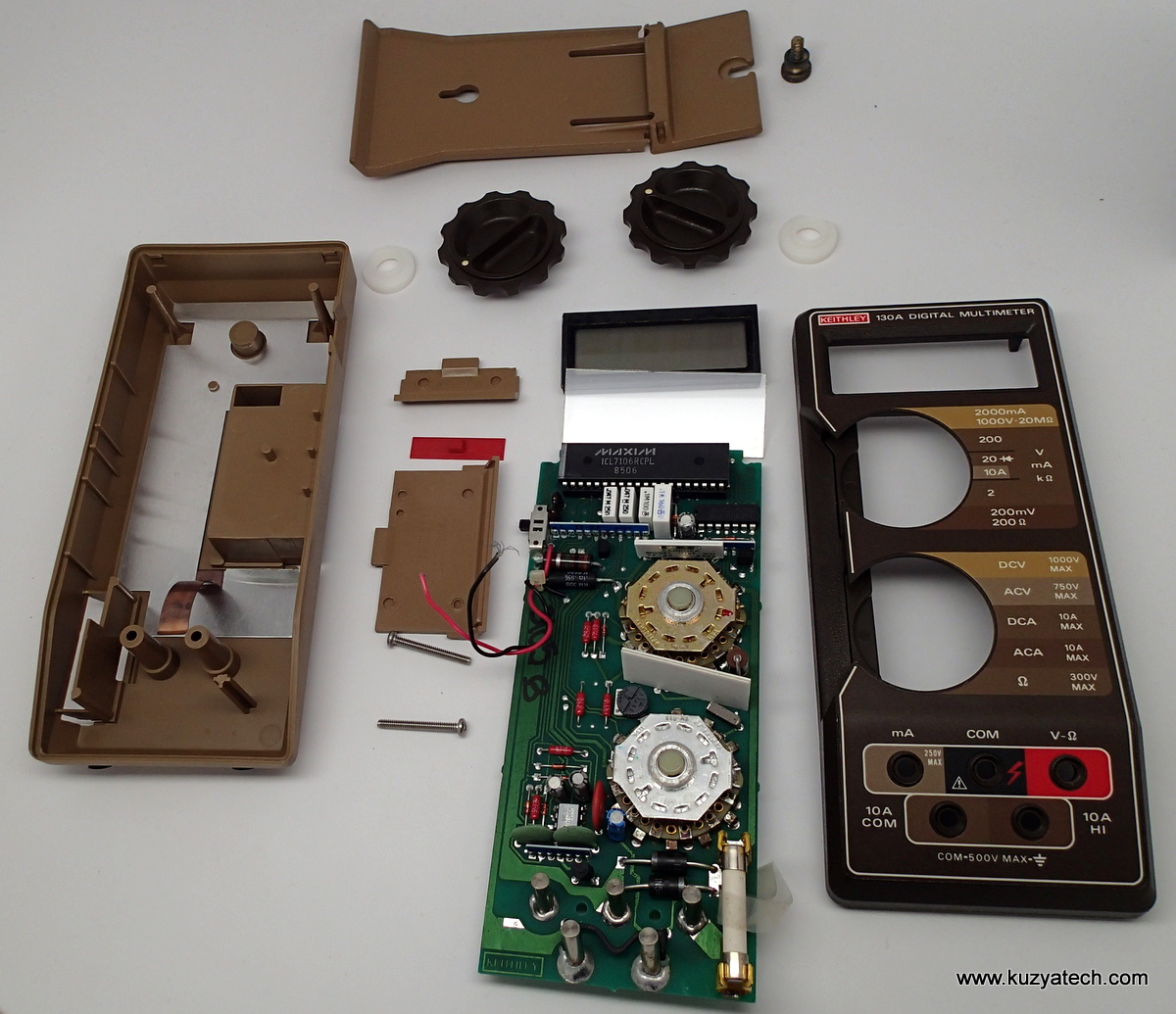


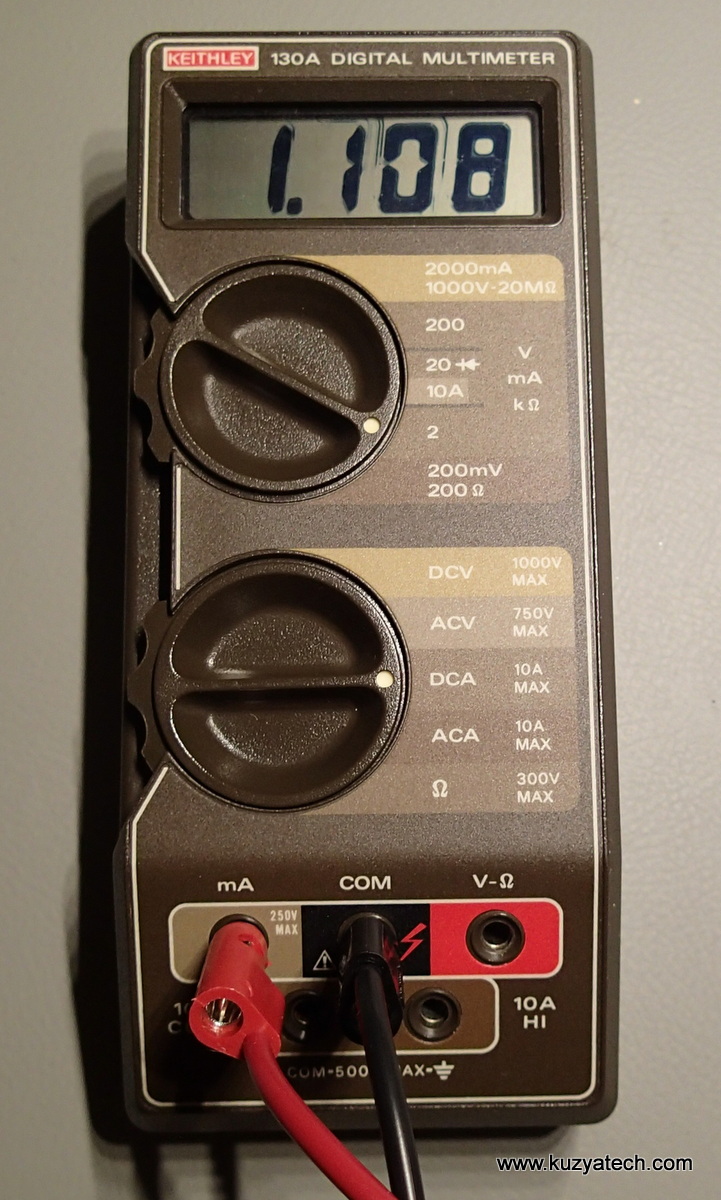
Nice !!!!
Wow….very nice work….I have a model 130 your more than welcome to if you want to cover shipping from 48062 USA….in a lot of vintage lab equipment I won at auction from a local college. ..I’ll put a battery in it and see if it powers on….no test leads that are original that I can see… @20 multimeters in one box but I don’t see the 130 set yet….still digging through the boxes.
Nice write up. I’d like to know the production dates as well. I just picked up a 130 for $2. MUCH cleaner than your’s and the SN on it is 20839. I’ve turned it on and it has a nice display. I haven’t done anything else with it yet.
I just found a 130a that had a battery in it, but no corrosion! Going to see if it still works.
You have done a lovely job, my one has a few cracks around the case and had a leaky battery. Too many years on the road as a service engineer and then being forgotten in a damp shed.
I fitted a new PP3 connector today and it still works, I need to find a way to calibrate it now, I just need a 190mV +/- 0.05% reference.
Looking at the specs of the 130A it seems like they still outperform many multimeters.